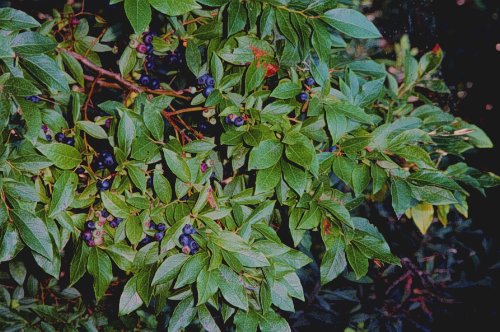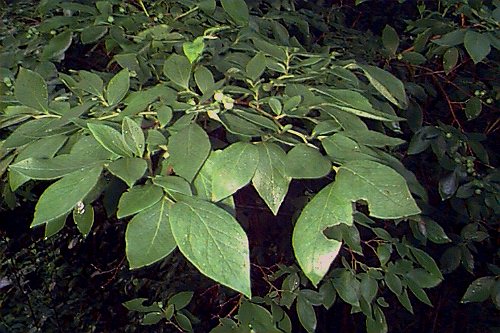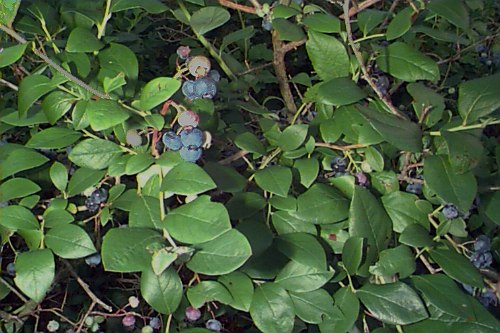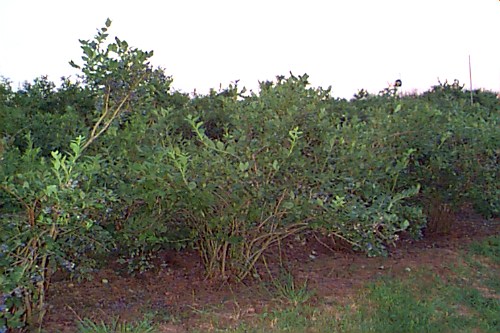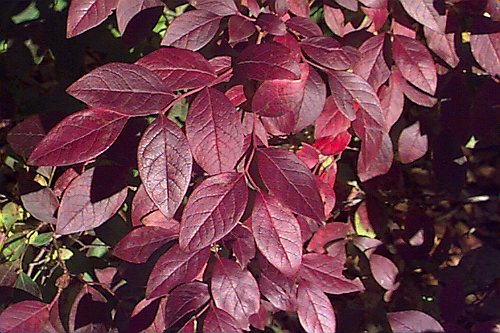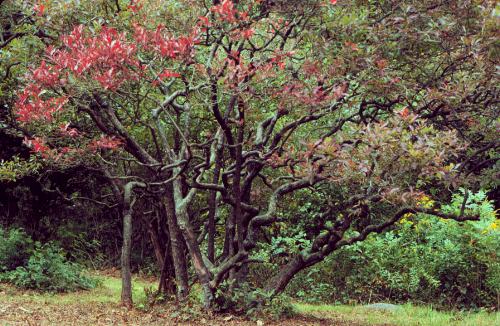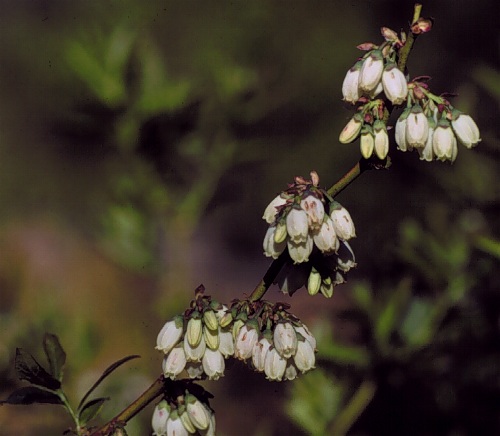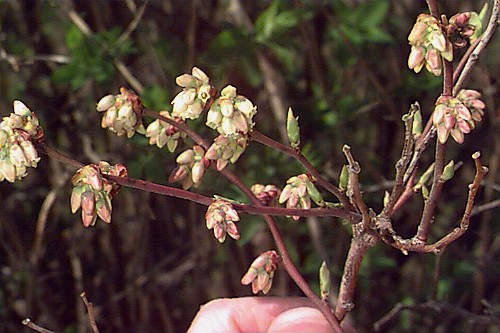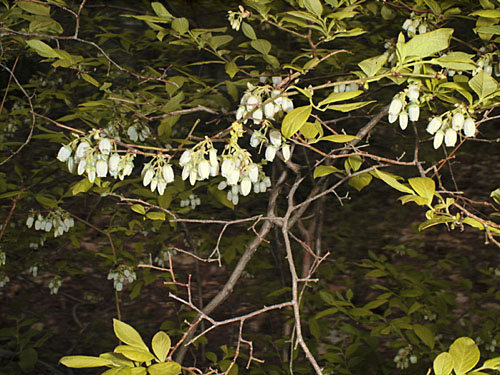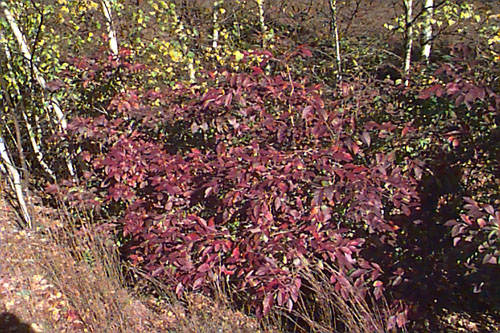Vaccinium corymbosum
Highbush Blueberry
Ericaceae
ExpandHabitat
- native to the eastern Unites States
- zone 3
- often found growing in or near swampy areas
Habit and Form
- a deciduous, twiggy shrub
- shape is rounded to irregular
- branching is upright-spreading
- multistemmed
- typically has dense foliage
- 6' to 12' tall with equal width
Summer Foliage
- alternate leaf arrangement
- simple, elliptical shape
- 1" to 305" long and half as wide
- dark green leaf color above, lighter underneath
Autumn Foliage
- excellent for fall color
- a mix of red, orange, purple, and yellow
Flowers
- 0.33" long urn-shaped white to very light pink flowers
- borne in groups in axillary
- blooms are typically numerous and somewhat showy
- bloom time is May
Fruit
- 0.25" to 0.5" diameter blue-black berry
- eaten readily by wildlife and humans
- ripen July through August
Bark
- old stems have gray-brown thinly furrowed bark
- new shoots are glabrous with a yellow-green to reddish color in the winter
- new shoots are quite attractive on close inspection
Culture
- ideal soil is moist, high in organic matter and well-drained
- pH must be very acidic (4.5 to 5.5)
- mulch around the roots
- sandy soils with adequate moisture support good growth
- full sun to partial shade
- more sun translates into more into more blooms, more fruit and enhanced fall foliage color
Landscape Use
- for edible fruit
- to attract wildlife
- excellent for fall color
- useful in a shrub border
- naturalized plantings
- along the edges of ponds, waterways
Liabilities
- iron chlorosis on high pH soils
ID Features
- alternate leaf arrangement
- red and green young stems
- stems with wart-like dots
- small urn-shaped flowers in May
- blue-black fruits in summer
- yellow-orange-red fall color
Propagation
- by seed
- by cuttings
Cultivars/Varieties
Many cultivars have been selected for variation in fruit traits and plant growth habit. Listed below with abbreviated descriptions are some of the more common forms. To obtain efficient pollination, more than one variety should be planted.
'Bluecrop' - One of the best fruiting cultivars, this plant bears immense quantities of medium-large fruit that are flavorful and light blue. The plant is vigorous with a spreading growth habit, plus it appears hardier and more drought tolerant than the species. 'Blueray' is a good choice for pollination.
'Blueray' - This compact plant grows to only 5' tall with an upright growth habit. The fruit are large and slightly tart in flavor. It is a handsome ornamental plant with glossy green foliage that turns red fall color. The stems are also reddish in winter. Use 'Bluecrop' as a planting combination for pollination.
'Jersey' - An old variety that is probably the most common form available, this cultivar grows upright. The berries are large and sweet when ripe, and the plant is among the hardiest selections available.
'North Blue' - This is a dwarf, self-fruitful variety that produces large, sweet berries in midsummer. It grows to 3' tall and is a good choice for smaller gardens.
'Patriot' - This plant bears fruit early and has berries about the size of a quarter. It is an upright grower that is very common in the industry.
'Rubel' - This selection is very hardy and bears sweet fruit midseason with red fall color. It is a strong-grower that reaches 7' tall with an upright habit.
'Sunshine Blue' - Heavily promoted in mail-order catalogs, this novel selection needs no pollinator and produces pink blooms that lead to sweet, deep blue berries. It grows to only 4' tall and wide.
